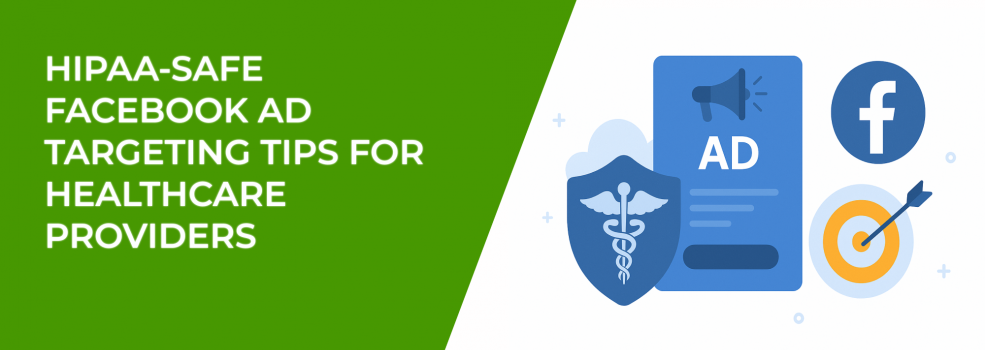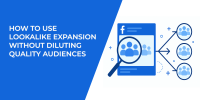Running Facebook ads in healthcare is a balancing act. On one side, you want to reach the right people at the right time. On the other, you need to ensure every click and impression stays compliant with HIPAA. Many providers worry that compliance automatically limits creativity, but that isn’t the case. With the right strategy, you can protect patient privacy and still run ads that drive real results.
Let’s dive deeper into how you can target responsibly while still making your campaigns effective.
Why HIPAA Compliance Matters in Digital Advertising
HIPAA isn’t just about patient records in a clinic—it applies to how information is handled across digital spaces. If your ad targeting implies knowledge of someone’s medical status, you risk stepping into sensitive territory. For instance, an ad that seems to “know” a user’s diagnosis could be seen as exposing protected health information.
The challenge is clear: healthcare advertisers must shift away from condition-based targeting and toward broader, safer approaches. Compliance not only protects your organization from fines but also strengthens trust with your audience. Trust, after all, is the foundation of healthcare marketing.
For a wider perspective on regulatory concerns across industries, check out Facebook Ad Compliance Tips for U.S. Regulated Industries (Finance, Healthcare, Legal).
Go Beyond Promotion: Lead With Education
Educational campaigns are more than just safe—they’re effective. By offering valuable resources instead of pushing services directly, you position your practice as an authority in the field. Over time, this creates stronger connections than a hard sell ever could.
For example, instead of running an ad that promotes a treatment, you could share:
-
A seasonal guide, such as “Healthy Habits for the Winter Months.”
-
A checklist like “5 Questions to Ask Before Your Next Health Screening.”
-
An explainer video about nutrition, exercise, or preventive care.
The beauty of this approach is that it invites curiosity without singling anyone out. People self-select into your funnel by engaging with resources that interest them, which makes your retargeting later more efficient and compliant.
To see how broader awareness campaigns work in practice, read Why Awareness Campaigns Should Be Part of Your Facebook Ads Strategy.
Demographic and Interest-Based Targeting Done Right
Facebook still offers plenty of targeting options that don’t touch sensitive health data. Think about what makes your ideal patients reachable outside of their medical needs.
Here are some safe categories to explore:
-
Age ranges — For instance, promoting colonoscopy awareness to adults over 50, or encouraging young families to schedule wellness visits.
-
Location — Healthcare is local by nature. Targeting a specific city or even a zip code ensures your ads are seen by people within your actual service area.
-
General interests — Broad lifestyle categories like nutrition, mindfulness, or fitness are HIPAA-safe and still connect well with health services.
Used together, these filters give you reach without risk. The mistake many providers make is over-narrowing their audiences. By keeping targeting broad but relevant, you not only comply with HIPAA but also avoid the high costs that come from overly restrictive campaigns.
For more depth on these strategies, see 2025 Guide to Facebook Interest Targeting for B2C Brands.
Building Custom Audiences the Safe Way
Custom audiences can be powerful, but only when handled responsibly. Never upload patient lists or use data from protected sources—that’s a clear violation. Instead, think of custom audiences as a way to nurture the people who have already chosen to interact with you online.
Consider these safe options:
-
Website visitors — If someone read a blog on your site about healthy eating, you can retarget them with ads about a nutrition program.
-
Social media engagers — Users who liked, shared, or commented on your Facebook content are a natural audience for follow-up campaigns.
-
Lookalike audiences — Build new audiences modeled on your existing engagers, but free from sensitive medical data.
Each of these strategies keeps you HIPAA-compliant while still giving you the benefits of precision targeting. They also work particularly well when combined with educational ads, since you know your retargeted audience has already shown genuine interest.
With LeadEnforce, you can go a step further. The platform lets you target people who follow specific Facebook groups and pages, which opens up more ways to connect without touching sensitive data. When used carefully, this approach can be both powerful and HIPAA-safe.
Here are some examples of how healthcare providers can use LeadEnforce while staying compliant:
-
Local parenting groups (ads about children’s wellness programs).
-
Fitness or nutrition pages (content on healthy lifestyle tips).
-
Community health organizations (ads for preventive screenings).
-
Hospital system or clinic pages (general awareness campaigns).
-
Mental wellness or meditation groups (stress management resources).
The goal is to keep targeting broad and lifestyle-driven rather than condition-specific. That way, your ads remain both effective and compliant.
Retargeting Without Risk
Retargeting often delivers the highest ROI in digital advertising, and healthcare is no exception. But instead of retargeting based on assumed health conditions, base it on user actions. This keeps your campaigns both effective and ethical.
For example, if someone downloads your free guide on “Reducing Stress at Work,” you can later show them a general ad about your wellness programs. You’re not assuming they have a condition—you’re simply responding to their demonstrated interest.
The benefit here is twofold: retargeting keeps you top of mind while ensuring that you never cross the line into sensitive personal data.
If you want to dig deeper, read How to Set Up Facebook Retargeting.
Transparency as a Competitive Advantage
In healthcare, transparency is more than compliance—it’s a trust signal. Ads that exaggerate or make unrealistic promises can backfire quickly. Instead, clear, honest messaging works better both for compliance and for conversion.
Make sure your ads:
-
Explain services in plain language.
-
Include disclaimers when necessary.
-
Provide a simple next step (such as booking a consultation).
People who feel respected are far more likely to click and convert. And in an industry where credibility matters, building long-term trust is far more valuable than chasing a quick win.
For creative approaches that stay authentic, check Make Your Facebook Ads a Trust-Building Machine.
Practical Pitfalls to Avoid
Even well-intentioned campaigns can slip into risky territory. Some common mistakes to steer clear of include:
-
Hyper-specific targeting — Narrowing audiences down to a degree that implies knowledge of a condition.
-
Using sensitive keywords — Words like “cancer treatment” or “mental health diagnosis” in ad targeting options can be risky.
-
Sharing patient testimonials without consent — Even anonymized stories can sometimes reveal more than you realize.
By staying alert to these pitfalls, you protect your brand and reduce legal exposure.
For more troubleshooting, see Why Facebook Ads Fail: 7 Targeting Issues You Didn’t Know About.
Final Thoughts
Healthcare providers don’t need to choose between compliance and performance. With the right approach, HIPAA-safe Facebook ads can build awareness, attract new patients, and strengthen your community presence.
Educational campaigns, broad but thoughtful targeting, and transparent messaging form the foundation of compliant healthcare advertising. Pair these with safe custom audiences and retargeting strategies, and you’ll have a system that respects privacy while still delivering strong results.
At the end of the day, patients want care providers they can trust. When your ads reflect that respect and responsibility, you’ll see it in both your compliance record and your campaign performance.

